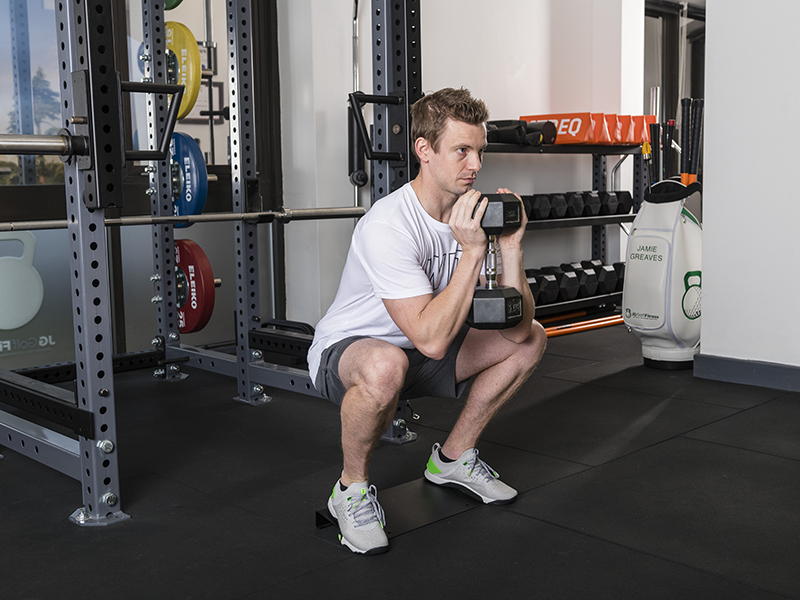Why Do Golfers Have Back Problems?
Fitness expert Jamie Greaves outlines four crucial considerations for golfers battling a back injury


Back injuries are one of the most common complaints among both amateur and professional golfers. A number of high profile names have experienced severe back issues, with perhaps the most famous case being Tiger Woods.
The 15-time Major Champion has undergone a number of back operations, and more recently hot-prospect Will Zalatoris returned from an almost eight month absence after surgery for a herniated disc.
Back injuries can lead to a regression in performance, due to reduced practice and playing time, but what is the root cause? While there isn't a simple answer, seeking expert advice is certainly the way forward. That's why we asked fitness guru, Jamie Greaves, to give us some pointers...
1. Rarely one cause

Will Zalatoris returning to competitive action in Hawaii after missing eight months with a back issue
Don't be too quick to blame your technique. Injuries are often multi-factorial in nature. Stress, workload, poor sleep and mechanics can all play their part, as can luck.
Prior to his back surgery in 2023, Will Zalatoris changed his swing to try and alleviate some stress that it was causing. Mechanics can play a part (and they probably did in this case), but it’s rarely ever one thing.
In this case, Zalatoris had swung the club that way for a long time and didn’t get injured, while someone with a classic low-stress swing (looks-wise) like Fred Couples suffered badly with back injuries. It’s never usually black and white.
2. Accept injuries happen

Tiger Woods stretching before the 2024 Genesis Invitational
Despite your best efforts, sometimes you just can't prevent injuries. The best golfers in the game are elite athletes, but even they are susceptible. Travelling the world for tournaments, increased stress, changing sleep patterns and the repetition of thousands of swings per year puts enormous strain on their bodies.
Subscribe to the Golf Monthly newsletter to stay up to date with all the latest tour news, equipment news, reviews, head-to-heads and buyer’s guides from our team of experienced experts.
When you consider the swing speed that some of these players currently reach, it's no wonder we see so many back injuries. While there are lots of things you can do to improve your chances of avoiding injury, sometimes they just happen – at which point it's all about focusing on rehabilitation and fitness.
3. More speed = more risk

Rory McIlroy using a launch monitor to gather feedback on swing speed and other metrics
Perhaps more pros are getting injured now due to the extra speed that they generate. These guys are 5, 10, even 15mph faster now than in years gone by. Many pros now use launch monitors on the range, giving them live insight into their swing speed.
Combined with playing more events, more travel and everything else that comes with life on tour, that’s a lot of extra stress and workload for the body to cope with. But in the modern world of golf, if you don’t have that speed you can’t compete – so you have to have it!
As for everyone else, if you are trying to increase your speed, accept that you're upping the risk and do what you can to ensure your body is ready for the extra strain. Below is a thread on things you can do to reduce your chances of picking up a golf-related injury.
4. Other things to consider

Take care when going back to golf after some time away. There was a big spike in niggles and injuries after lockdown, when golfers went from little to no swings for three months to going all out when courses re-opened.
If you've neglected your fitness, there are loads of simple golf stretches everyone can try that will help, while I'd always advise doing some lower back exercises to increase your strength in this area.
Additionally, if you slept poorly or feel a little under the weather, your injury risk is probably considerably higher than usual.
The pros are the same, but obviously they are better equipped to deal with these stresses as it's their job. Sticking to the principals above will certainly help you move in the right direction, and hopefully allow you more injury-free time on the golf course in the future.

Jamie Greaves is a strength and conditioning coach and an avid golfer. He played college golf in America, where he reached a handicap of +2. Whilst playing in the States, Jamie discovered a love for fitness and how proper training can positively influence your golf game. Now TPI Fitness Level 3 Certified, Jamie has his own studio at Northampton Golf Club. He trains players of all ages and abilities both in person and through his JG Golf Fitness App. He also works with a number of Tour professionals, including Charley Hull, Lauren Taylor and Meghan MacLaren.